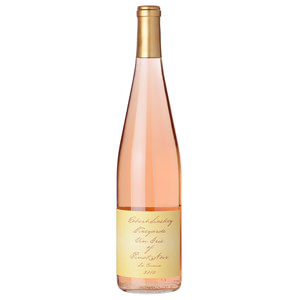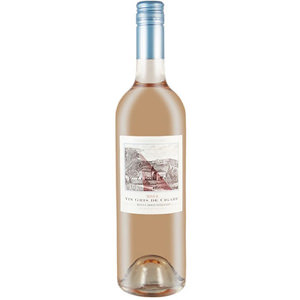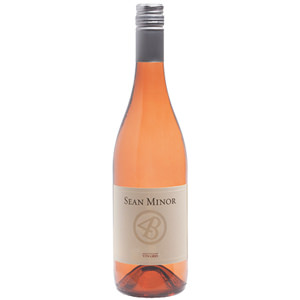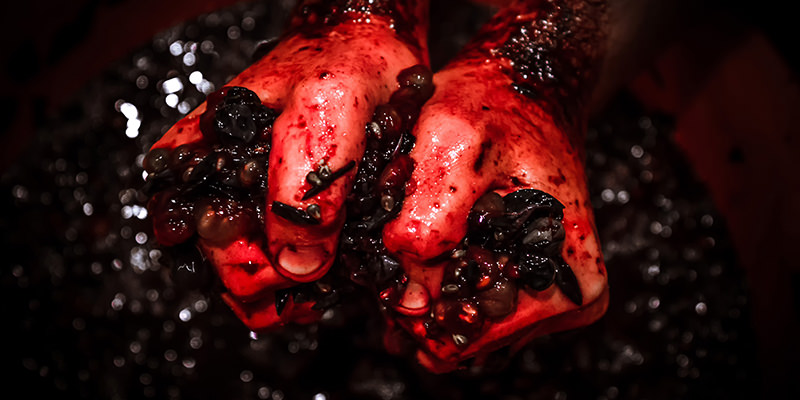Translated literally, the term “vin gris” has little romance or appeal. It means “gray wine,” a category which only the most shameless of marketing ploys has tried to breach. (Those naughty brand execs…)
The real way to understand “vin gris” is figuratively, and after that, feel free to enjoy it quite literally. Vin gris is simply a term for a very light (we’re talking pale pink) rosé wine made from red grapes. The difference between the vin gris method and the traditional rosé method? There’s almost zero maceration time whatsoever.
Maceration time, if you recall, means the time the grape juice itself has in contact with the grape skins. In a vin gris, the grapes are pressed but the juice is not left for any significant contact time with the darker grape skins, which results in the extraction of a mostly clear juice. If you’ve ever drank blanc de noirs champagne, you’ve drank a kind of vin gris.
Vin gris isn’t just a method of wine production. It can also be a sort of two-for-the-price-of-one winemaking trick: vintners can press red grapes just a bit (about 10% of the juice), allowing that juice to have slight contact with the grape skins. The clever buggers then drain off that juice to make a rosé, taking the remaining semi-pressed grapes and pressing them again. At this point, they leave the skins in contact with the juice as they would for any red wine, except now there’s less juice, resulting in a higher skin-to-juice ratio—and a more concentrated, aromatic red wine. The rosé here is essentially a byproduct of producing a more concentrated red wine—typically done with Pinot Noir. Fortunately, as far as byproducts go, this is a pretty great one.
The above method is known as the saignée method—another grim translation, it literally means the “bleeding” method, as in that first bit of grape juice is “bled off” and turned into rosé. But it can produce some of very rich, savory, complex red wines.
As for what grapes can be used to make a vin gris, they’re typically darker-skinned but delicate, grapes like Pinot Noir, Gamay, Grenache. In France, in fact, what’s called a “gris de gris” has to be made exclusively from lighter-tinted grapes like Gamay, Grenache, and Cinsault. No surprise, most vin gris are fermented in stainless steel, since their hyper-delicate qualities could easily be overwhelmed by contact with oak.
Beyond that, the term “vin gris” itself isn’t very strictly regulated, so buying a bottle with “Vin Gris” on the label won’t guarantee your wine is made in this method. Although chances are, if you’re buying a moderately priced, maybe $12 and up, bottle, you’ll be getting something made this way.
Here are a few bottles to give the idea a bit more…color (get it???).
2015 Robert Sinskey Vineyards Vin Gris of Pinot Noir

Bottles like this make it easier to see what you’re getting. A vin gris made from Pinot Noir (which is one of the more common types you’ll find, since the remaining semi-pressed grapes, as mentioned, get fermented into a richer, more complex red Pinot Noir). Lighter, soft berry and stone fruit flavors with super delicate florals and fresh acidity.
2015 Bonny Doon Vineyards Vin Gris de Cigare

Another light vin gris, made with a blend of grapes (mostly Grenache) rather than one variety. Once again—and almost typically with the style—you’ll get light strawberry with a little bit of dry citrus and florals. Lower priced than the Sinskey, so a good entry-level vin gris rosé from one of our favorite winemakers Randall Grahm.
Sean Minor Napa Vin Gris 2014

Made with the saignée method, a darker vin gris, so you’ll get a bit more rich berry (think cherry, raspberry, tangy currant) with bright acidity and some delicate balancing minerality.

